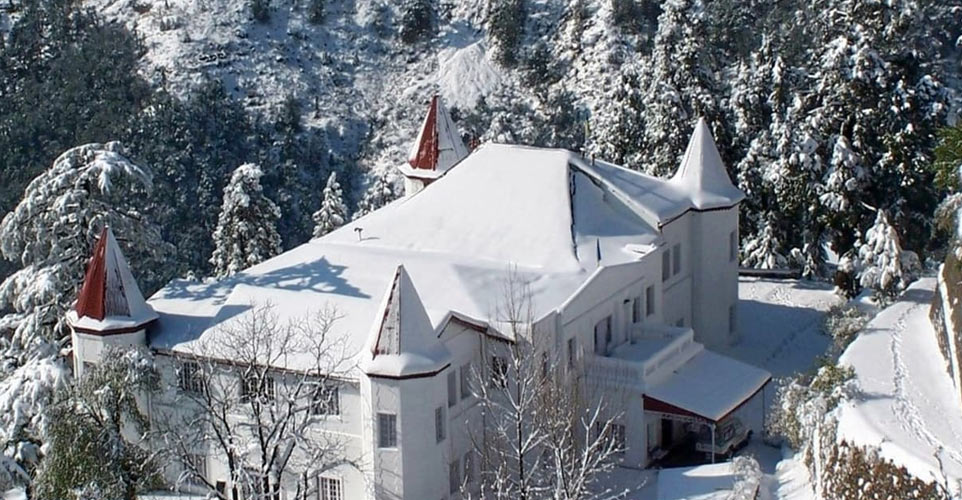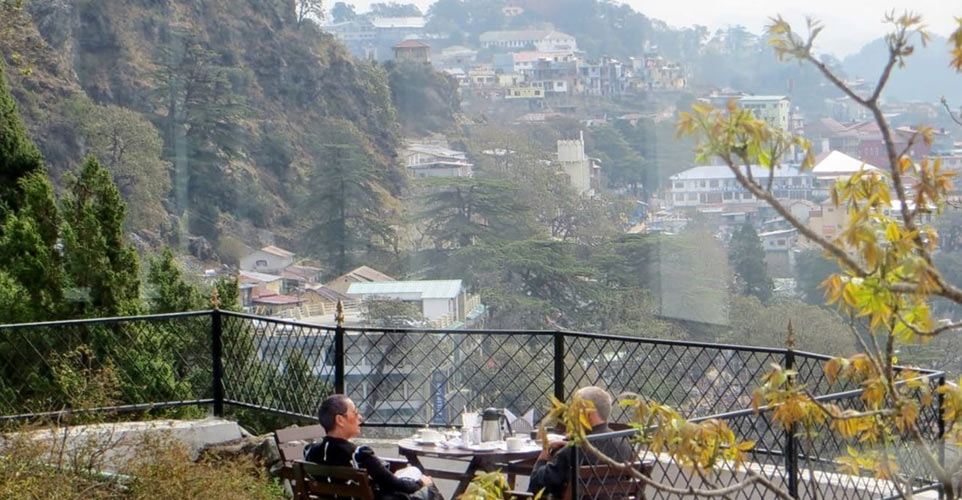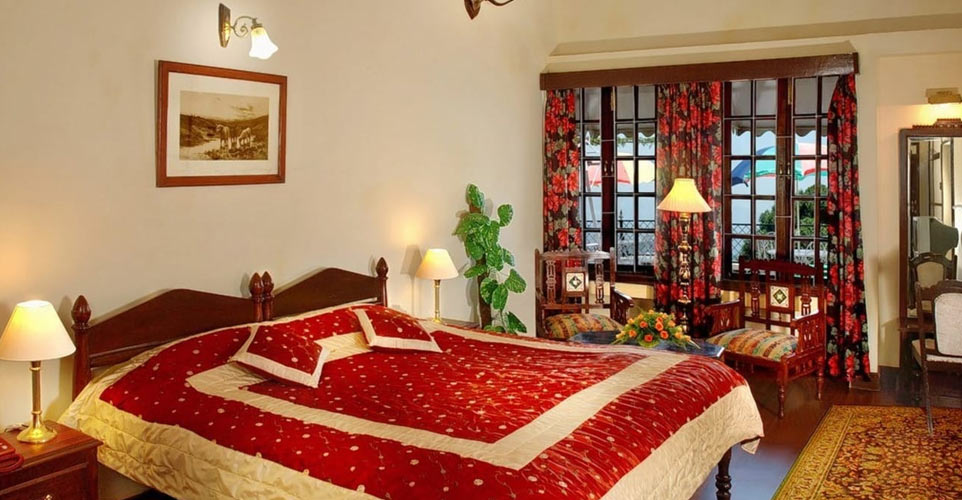Kasmanda Palace, Mussoorie is part of the WelcomHeritage Hotel group, which has more than 20 exclusive heritage properties across India...
A gentle mist envelops Mussoorie and its environs. It is the month of August, and certainly not the ‘season of mists and mellow fruitfulness’ as in Keats’s ode. But the ambience is similar. And we drove up to Kasmanda Palace Hotel, we realised that there were many more images here that seemed familiar—a much-used Victorian buggy graces one side of the Palace grounds, a mute tribute to the days of the Raj, when genteel folk of aristocratic lineage rode in to keep their tryst with the erstwhile maharaja of Kasmanda. The stately mansion, with its white columns, reminds one of other columns adorning graceful structures elsewhere in the country, all legacies of British rule in India.
With 150 years of history to speak of, the Kasmanda Palace Hotel is easily one of the the oldest buildings in Mussoorie. Originally built as part of the Anglican Christ Church complex in 1836 by Captain Rennie Tailour of the Bengal Engineers, the mansion changed several hands—first as a sanatorium for the British armed forces, then as one of Mussoorie’s first schools—before it assumed the status of a summer retreat of the Kasmanda Royal Family in 1915. Even as it is now part of the WelcomHeritage Group of Hotels, the family still retains the property.

The old-world charm of heritage hotels lies in its retainment of the old tradition and culture of the royal family’s lifestyle, their inveterate hospitality, which was a way of life and today translates into the individual attention and care that one receives in these places. We experienced it in the Kasmanda Palace Hotel, in the warm friendliness of the hotel retainers and the non-intrusive staff, whose personalisation exists not only at the managerial level, but in the higher echelons of office as well—in the person of “Yuvraj” Dinkar Singh, himself.
Bridging past with the present
Any account of Kasmanda Royal Palace would be incomplete without a special mention of the Yuvraj, Dinkar Singh. Gracious and dapper, the very young Yuvraj of the district of Kasmanda, near Lucknow in Uttar Pradesh, is personally involved in the mechanics of the hotel. When quizzed about the property’s USP, he said, “It is the vantage point that it occupies, just above the Mall Road, so it is just minutes away from the heart of town, yet enjoys the exclusivity of being away from the hustle and bustle of town life. On clear days, you can see the entire Doon Valley stretching before you. Another USP are the 1916 photographs of my family, that is, my grandfather, along with the Viceroy, which is, indeed, a very rare photo.” Singh spoke about his personal involvement with the interiors of the property, especially the kitchen. “There are three cooks, and the cuisine offers a good mix of Indian, Chinese and Continental. We have arranged with another professional, a lady, who will provide a new menu for the next season. The busy periods are April through June, and from October to February.
Ravi Dhar, General Manager, Kasmanda Royal Palace, corroborated this as an actual fact when he said, “The present Yuvraj and his family are involved in the hospitality business, and they have put their heart and soul into it. The Yuvraj has taken personal interest in the interiors of the property and is responsible for the makeover of its furniture and upholstery.”

On the unique appeal of the property, Dhar said, “Every destination has its own charm, and we are trying to cultivate on that attribute, to bring out the best results.”
And indeed, the results are quite apparent for all to see. For while history is ever-present, there are changes, too. So, the palace has been modernised to suit the conveniences of today’s international traveller. One can see it as one enters the palace grounds. The white stucco façade of the mansion, with its steeples and columns, has been designed in the French-Anglican mode. The green landscape surrounding the palace grounds owes its beauty more to nature than to design, while the terraced gardens and many of the trees owe their origin to the late Rajmata Saheb of Kasmanda’s fondness and interest in flowers and trees. As you enter the lobby, a red-carpeted, wooden stairway—which boasts an antiquity that’s more than a century old—leads upwards to the modern guest rooms.
The ambience of tradition and grandeur is pervasive in the sepia photographs and family memorabilia that adorn the walls in the lobby and the corridors of the guest rooms. The walls also sport full-mounted shikhar trophies of tigers, panthers, rhino, and even, the tiny hispid hare.

The Kasmanda Palace Hotel has 24 guest rooms designed in the Anglo-French style. Each of the rooms in the new wing all open out to separate, individual views. All the rooms are spacious, and designed for comfort. There are eight Superior rooms, three Delux rooms, seven Royal and six Executive rooms, each with TVs, satellite channels, DD phones, plus a travel desk and conference facilities.
The hotel also arranges—for its guests—excursions to the major sights of Mussoorie, including Kempty Falls, the Nag Devta Temple, Jwalaji Temple and Dhanaulti, plus an escorted visit to the Rajaji National Park.
On cold days, the hotel provides bonfire facilities on the beautiful, lush lawns outside.
